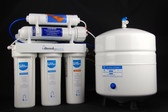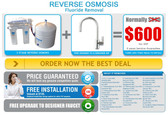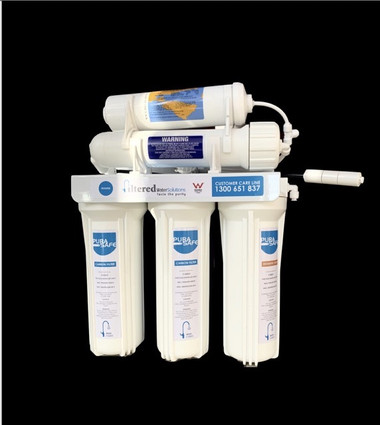 Loading... Please wait...
Loading... Please wait...- Home
- ▶︎OTHER FILTRATION systems
- Auto clave Reverse Osmosis
Products
Auto clave Reverse Osmosis
Product Description

The Undersink Reverse Osmosis is neatly installed under the sink with a dedicated faucet installed above the sink. This system has a storage tank which automatically refills the level of water as you use it with a method purely based on pressure (no electricity) in the mains to operate the system of check valves, automatic shut off valve and diaphragm. When faucet is turned on, water comes out of the storage tank then automatically replaces the used amount of water and automatically turns itself off once it is full.
Reverse osmosis membrane is made from what is called Thin Film Composites (TFC) also called polyamide (PA) membranes. These membranes filter the water at around 0.0005 microns, which is about ½ a millionth of a millimetre, it is so fine that it can strain salt out of the water. The RO membranes work down to the molecule structure of water (H2O), if a molecule of water has an extra atom attached such as a carbon atom the molecule is too large to fit through the membrane and is rejected and goes down the contaminated water line which is commonly referred to as the waste line and expelled from the system. Only water molecules which are H2O are small enough to slip through the membrane (leaving behind the contaminated water molecules) and into the RO product line for you to use.
Deionised (Di) Resin removes total dissolved solids (TDS) from water using ion exchange resins, controlling the electric charge of ions in the water to remove the TDS. DI resin filters exchange positive hydrogen and negative hydroxyl molecules for positive and negative contaminant molecules in water. Also referred to as "water polishing." , this process typically removes 99% of contaminants. The resins are small plastic beads composed of organic polymer chains that have charged functional groups built into the resin bead.
Note: The Di Resin Reverse Osmosis is recommended for dental surgeries & Laboratory sterilising machines - AUTOCLAVES.
Stage 1: Sediment 1 Micron: This removes dirt, sediments, sand, and other physical particles.
Stage 2: Carbon Block: This reduces chemicals such as chlorine that may be present in your water supply.
Stage 3: 2nd Carbon Block: This further reduces organics, odors, and other chemicals that might be present in you water supply.
Stage 4: Reverse Osmosis Membrane: It has the Dow Filmtec 200 litre per day TFC membrane, the 200 litres is rated at 50 psi (350 kpa). This system has an auto shut-off device that closes off the in-feed supply when the storage tank has filled.
Stage 5: Deionisation (Di) Resin: Removes total dissolved solids (TDS) from water using ion exchange resins, controlling the electric charge of ions in the water to remove the TDS. DI resin filters exchange positive hydrogen and negative hydroxyl molecules for positive and negative contaminant molecules in water. Also referred to as "water polishing." , this process typically removes 99% of contaminants. The resins are small plastic beads composed of organic polymer chains that have charged functional groups built into the resin bead
Please call 1300651837 for further enquiries







